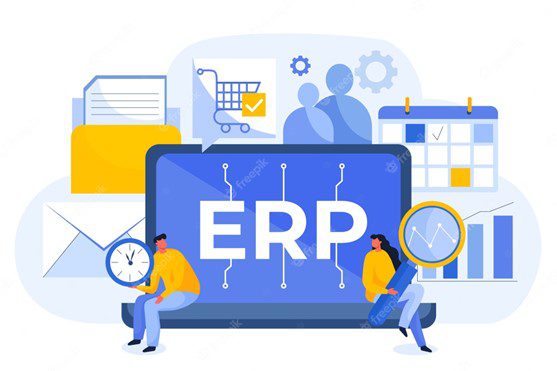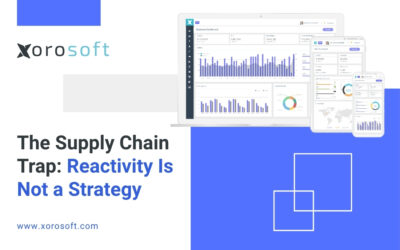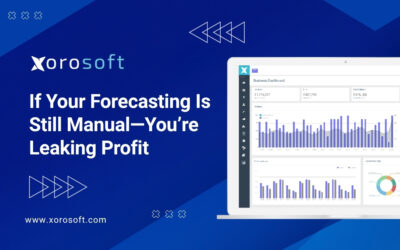
Introduction to ERP Systems
Enterprise Resource Planning (ERP) systems have revolutionized the way businesses manage their operations and streamline their processes. In the context of supply chain management, ERP systems play a crucial role in ensuring smooth coordination between various stakeholders, optimizing inventory levels, and enhancing overall efficiency. In this comprehensive guide, we will delve into the world of ERP systems and explore the pros and cons of XoroERP as an ERP solution for supply chain management.
Understanding the Importance of ERP in Supply Chain Management
Supply chain management involves the coordination of various activities, from procurement to production to distribution, to ensure that goods or services reach the end consumer efficiently. One of the key challenges in supply chain management is the complexity of managing multiple interdependent processes and stakeholders. This is where ERP systems come into play. ERP systems provide a centralized platform that integrates various functions and departments within an organization, enabling real-time visibility, data-driven decision-making, and improved collaboration.
Overview of XoroERP and Its Features
XoroERP, developed by Xorosoft, is a comprehensive ERP solution designed specifically for supply chain management. It offers a wide range of features and capabilities that enable businesses to streamline their operations, enhance productivity, and gain a competitive edge. Some of the key features of XoroERP include:
-
Inventory Management System: XoroERP provides robust inventory management capabilities, allowing businesses to track and manage their inventory levels in real-time. It enables accurate demand forecasting, efficient order management, and optimized stock replenishment.
-
Accounting: XoroERP incorporates powerful accounting functionalities, making it easier for businesses to manage their financial transactions, track expenses, generate accurate financial reports, and ensure compliance with accounting standards.
-
Supply Chain Visibility: XoroERP offers end-to-end visibility across the entire supply chain, enabling businesses to monitor the movement of goods, track delivery schedules, and identify potential bottlenecks or delays. This visibility helps in proactive decision-making and timely interventions to ensure smooth operations.
-
Integration and Scalability: XoroERP seamlessly integrates with other systems and applications, allowing businesses to leverage existing infrastructure and technologies. It also offers scalability, accommodating the growth and evolving needs of businesses over time.
Pros of Using XoroERP for Supply Chain Management
XoroERP offers several advantages that make it a compelling choice for businesses looking to optimize their supply chain management processes. Here are some of the key pros of using XoroERP:
-
Improved Efficiency: By streamlining and automating various processes, XoroERP helps businesses achieve higher operational efficiency. It eliminates manual data entry, reduces errors, and enables real-time access to critical information, thereby saving time and resources.
-
Enhanced Collaboration: XoroERP facilitates seamless collaboration between different departments and stakeholders involved in the supply chain. It provides a centralized platform for sharing information, communicating, and making joint decisions, leading to improved coordination and faster response times.
-
Data-Driven Decision-Making: With its advanced analytics capabilities, XoroERP enables businesses to make informed decisions based on real-time data. It offers customizable reports, dashboards, and key performance indicators (KPIs) to monitor performance, identify trends, and drive continuous improvement.
Cons of Using XoroERP for Supply Chain Management
While XoroERP offers numerous benefits, it is essential to consider the potential drawbacks before implementing it for supply chain management. Here are some of the cons of using XoroERP:
-
Cost: Implementing an ERP system like XoroERP can involve significant upfront costs, including software licenses, hardware infrastructure, and implementation services. Additionally, ongoing maintenance and support expenses should be considered.
-
Complexity: ERP systems, including XoroERP, can be complex to implement and customize according to specific business requirements. They often require extensive training, change management, and ongoing system administration to maximize their potential.
-
Integration Challenges: Integrating XoroERP with existing systems and applications can be a complex task, especially if the organization has a diverse technology landscape. Integration efforts may require additional resources and expertise to ensure smooth data flow and interoperability.
Comparing XoroERP with Other ERP Solutions in the Market
When selecting an ERP solution for supply chain management, it is essential to evaluate different options available in the market. While XoroERP offers a comprehensive set of features, it is always beneficial to compare it with other ERP solutions to make an informed decision. Some of the key factors to consider during the evaluation process include:
-
Functionality: Assess the functionality and specific features offered by different ERP solutions, considering your organization’s unique requirements.
-
Scalability: Evaluate the scalability of each ERP solution to ensure that it can accommodate your organization’s growth and evolving needs.
-
User Experience: Consider the user interface, intuitiveness, and ease of use of each ERP solution to ensure user adoption and satisfaction.
-
Vendor Support: Assess the vendor’s reputation, customer support capabilities, and availability of ongoing training and updates.
Exploring the Inventory Management Capabilities of XoroERP
One of the critical aspects of supply chain management is efficient inventory management. XoroERP offers robust capabilities to manage inventory effectively throughout the supply chain. Some of the key features of XoroERP’s inventory management module include:
-
Real-Time Inventory Tracking: XoroERP provides real-time visibility into inventory levels, enabling businesses to monitor stock levels accurately and prevent stockouts or excess inventory.
-
Demand Forecasting: XoroERP incorporates advanced demand forecasting algorithms, leveraging historical data, market trends, and other factors to predict future demand accurately. This helps in optimizing inventory levels and reducing carrying costs.
-
Order Management: XoroERP streamlines the order management process, from order placement to fulfillment. It automates order processing, tracks order status, and facilitates seamless communication with suppliers and customers.
Analyzing the Accounting Features of XoroERP
Accurate financial management is crucial for the success of any business. XoroERP offers robust accounting functionalities that facilitate efficient financial management. Some of the key accounting features of XoroERP include:
-
General Ledger: XoroERP provides a comprehensive general ledger module that enables businesses to record and track financial transactions accurately. It supports multiple currencies, journal entries, and automated posting.
-
Accounts Payable and Receivable: XoroERP simplifies the management of accounts payable and receivable. It automates invoice processing, tracks payments and receipts, and generates aging reports to monitor outstanding balances.
-
Financial Reporting: XoroERP offers a range of financial reporting capabilities, allowing businesses to generate customized reports, such as balance sheets, profit and loss statements, and cash flow statements. These reports provide insights into the financial health of the organization.
How to Implement XoroERP in Your Organization
Implementing XoroERP in your organization requires careful planning and execution. Here are some key steps to ensure a successful implementation:
-
Define Objectives: Clearly define your organization’s objectives and desired outcomes from implementing XoroERP. This will guide the implementation process and help in measuring success.
-
Identify Stakeholders: Identify key stakeholders, including management, IT department, and end-users, who will be involved in the implementation process. Ensure their active involvement and support throughout the project.
-
Data Migration: Plan and execute the migration of existing data to XoroERP, ensuring data integrity and accuracy. This may involve data cleansing, mapping, and validation.
-
Training and Change Management: Provide comprehensive training to end-users to ensure a smooth transition to XoroERP. Also, implement change management strategies to address any resistance and ensure user adoption.
Xorosoft’s Customer Support and Training for XoroERP Users
Xorosoft is committed to providing excellent customer support and training to its XoroERP users. They offer various support channels, including phone, email, and online chat, to address any queries or issues faced by users. Xorosoft also provides comprehensive training programs and resources to help users maximize the potential of XoroERP and stay updated with the latest features and enhancements.
Conclusion: Is XoroERP the Right ERP Solution for Your Supply Chain Management Needs?
Choosing the right ERP solution for supply chain management is a critical decision that can impact the overall efficiency and profitability of your organization. XoroERP offers a comprehensive set of features and capabilities that can streamline your supply chain operations and drive business growth. However, it is essential to evaluate your organization’s specific requirements, consider the pros and cons, and compare XoroERP with other ERP solutions in the market. To make an informed decision, we recommend booking a demo with Xorosoft to experience the power of XoroERP firsthand.









